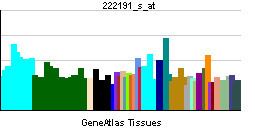Entrez 11285 | Ensembl ENSG00000027847 | |
 | ||
External IDs MGI: 2384987 HomoloGene: 5248 GeneCards: B4GALT7 | ||
Beta-1,4-galactosyltransferase 7 also known as galactosyltransferase I is an enzyme that in humans is encoded by the B4GALT7 gene. Galactosyltransferase I catalyzes the synthesis of the glycosaminoglycan-protein linkage in proteoglycans. Proteoglycans in turn are structural components of the extracellular matrix that is found between cells in connective tissues.
Contents
Function
Galactosyltransferase I is one of seven β-1,4-galactosyltransferase (β4GalT) enzymes. These enzymes are type II membrane-bound glycoproteins that appear to have exclusive specificity for the donor substrate UDP-galactose; all transfer galactose in a β-1,4 linkage to similar acceptor sugars: GlcNAc, Glc, and Xyl. Each beta4GalT has a distinct function in the biosynthesis of different glycoconjugates and saccharide structures. As type II membrane proteins, they have an N-terminal hydrophobic signal sequence that directs the protein to the Golgi apparatus and which then remains uncleaved to function as a transmembrane anchor. By sequence similarity, the beta4GalTs form four groups: β4GalT1 and β4GalT2, β4GalT3 and β4GalT4, β4GalT5 and β4GalT6, and β4GalT7. The enzyme encoded by this gene attaches the first galactose in the common carbohydrate-protein (GlcA-β-1,3-Gal-β-1,3-Gal-β-1,4-Xyl-beta1-O-Ser) linkage found in proteoglycans. Manganese is required as a cofactor. This enzyme differs from the other six beta4GalTs because it lacks the conserved β4GalT1-β4GalT6 Cys residues and it is located in cis-Golgi instead of trans-Golgi.
Clinical significance
Mutations in the B4GALT7 gene that result in a defective galactosyltransferase I enzyme with reduced or absent activity are associated with progeroid type Ehlers-Danlos syndrome. Since mutations in B4GALT7 impair a glycosylation pathway, the resulting subtype of Ehlers-Danlos syndrome may be considered a congenital disorder of glycosylation (CDG), according to the new CDG nomenclature.
Mutations in B4GALT7 cause Larsen syndrome .Cartault, F; Munier, P; Jacquemont, M. L.; Vellayoudom, J; Doray, B; Payet, C; Randrianaivo, H; Laville, J. M.; Munnich, A; Cormier-Daire, V (2014). "Expanding the clinical spectrum of B4GALT7 deficiency: Homozygous p.R270C mutation with founder effect causes Larsen of Reunion Island syndrome". European Journal of Human Genetics. 23: 49–53. doi:10.1038/ejhg.2014.60. PMID 24755949.
